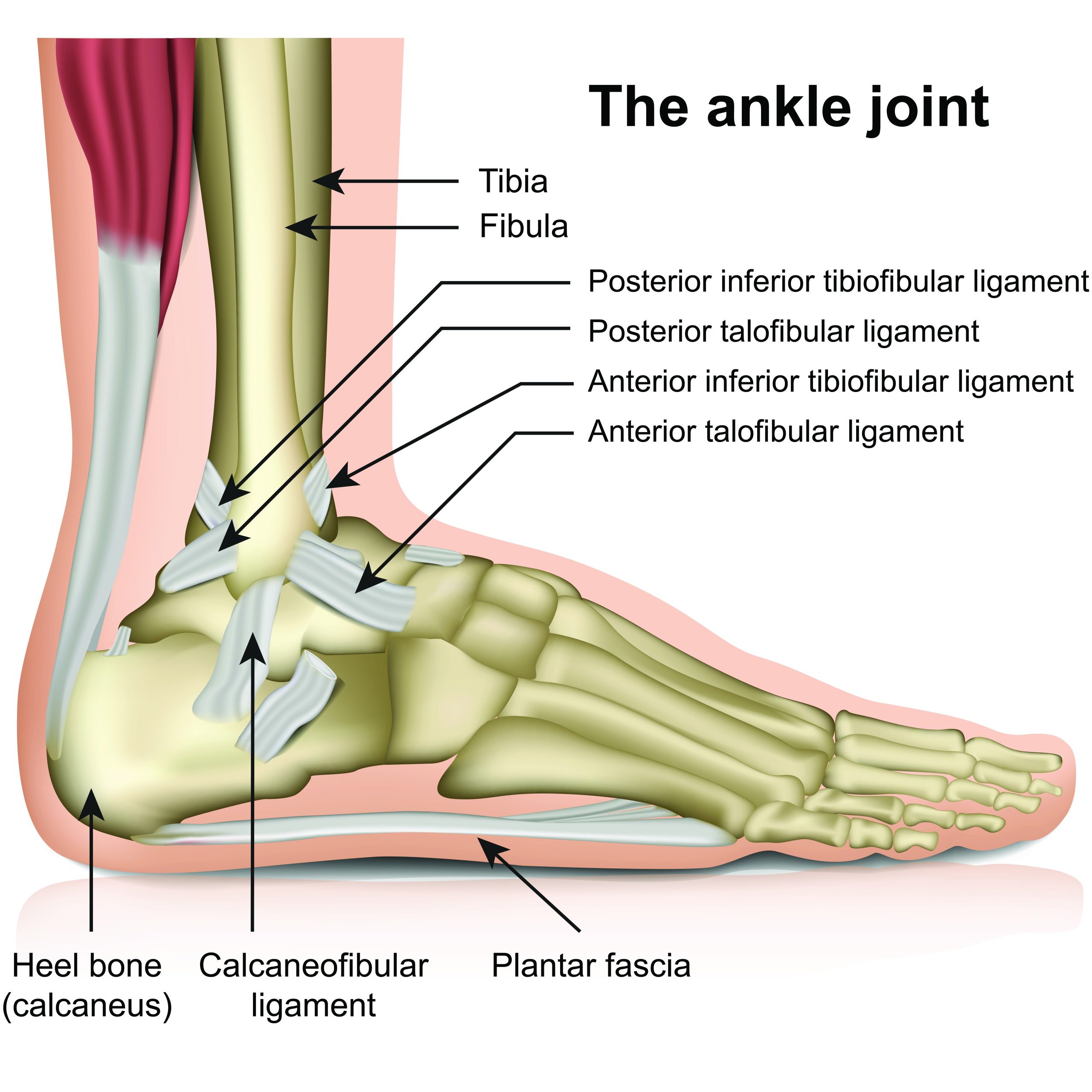Ligament Tears
A ligament is a tough band of fibrous connective tissue that connects bone to bone, usually holding structures together to keep them stable. When the ligaments get stretched or torn due to a force that is beyond the normal range of motion, this results in a ligament tear and leads to a sprain.
Ligament tears commonly occur in different parts of the body, such as the ankle.

In an ankle joint, the lateral ligament complex is usually the area that gets torn, which consists of the anterior talofibular (ATFL), the posterior talofibular (PTFL) and the calcaneofibular (CFL) ligaments.
WHAT ARE THE SYMPTOMS?
Common symptoms of an ankle ligament tear include:
- Swelling and bruising at the ankle
- Tender to the touch
- Pain
- Muscle spasms
- A “pop” sound may be heard when the injury occurs
- Inability to move the ankle
WHAT ARE THE CAUSES AND RISK FACTORS?
Common causes of an ankle ligament tear include:
- Direct blow to the ankle joint
- Awkward landing after a jump
- Twisting motion of your ankle
WHAT IS THE DIAGNOSIS?
A history of the injury and a physical examination of the ankle will be conducted by the Doctor. He may gently press on your ankle and move your ankle as well to check on your range of motion.
Imaging tests will be taken, such as x-ray to rule out other causes of pain such as a fracture, and a MRI scan to confirm the type of ligament tear.
Often, an ankle ligament tear leads to an ankle sprain. Sprains can be classified into 3 categories:
- Grade 1
Mild ankle sprain with no significant tearing to the ligament
- Grade 2
Moderate ankle sprain with a partial tear to the ligament
- Grade 3
Severe ankle sprain with a complete tear to the ligament
WHAT ARE THE TREATMENT OPTIONS?
The treatment method for an ankle ligament tear depends on the type of sprain sustained. Patients who sustain a grade 1 and grade 2 sprain can recover with nonsurgical treatment methods, such as:
- RICE therapy (rest, ice, compression, elevation)
- Medication such as over-the-counter pain relievers (acetaminophen) and nonsteroidal anti-inflammatory drugs (ibuprofen) to relief pain and swelling
- Walking supports such as a brace or crutches to support your weight and let your ankle heal
- Physiotherapy such as strengthening exercises to regain strength in your ankle and restore your range of movement. This is done when the initial pain and swelling has subsided and you are able to move your ankle
For patients who have sustained a grade 3 sprain or nonsurgical treatments have not helped after a period of time, surgery may be recommended.











